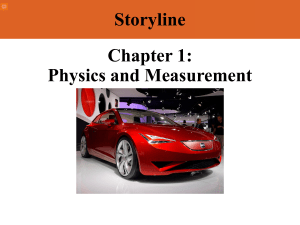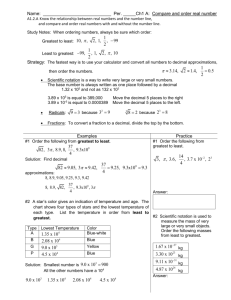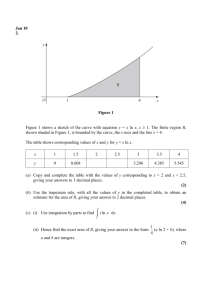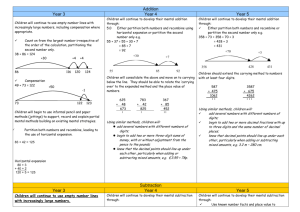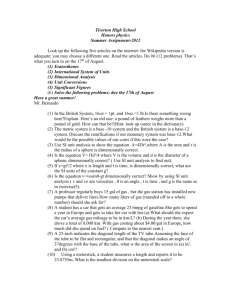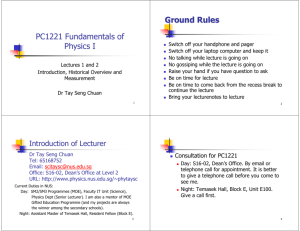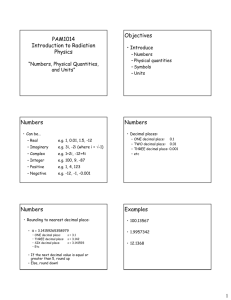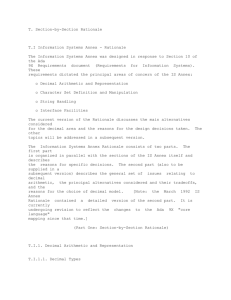Measurements - Middle East Technical University
advertisement
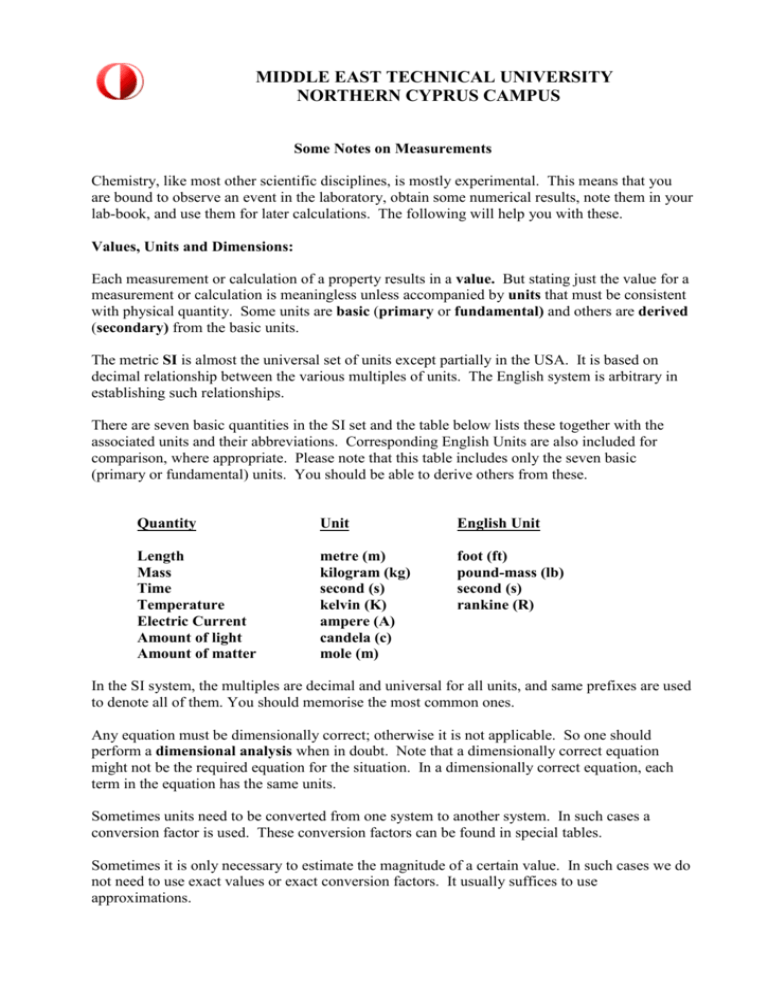
MIDDLE EAST TECHNICAL UNIVERSITY NORTHERN CYPRUS CAMPUS Some Notes on Measurements Chemistry, like most other scientific disciplines, is mostly experimental. This means that you are bound to observe an event in the laboratory, obtain some numerical results, note them in your lab-book, and use them for later calculations. The following will help you with these. Values, Units and Dimensions: Each measurement or calculation of a property results in a value. But stating just the value for a measurement or calculation is meaningless unless accompanied by units that must be consistent with physical quantity. Some units are basic (primary or fundamental) and others are derived (secondary) from the basic units. The metric SI is almost the universal set of units except partially in the USA. It is based on decimal relationship between the various multiples of units. The English system is arbitrary in establishing such relationships. There are seven basic quantities in the SI set and the table below lists these together with the associated units and their abbreviations. Corresponding English Units are also included for comparison, where appropriate. Please note that this table includes only the seven basic (primary or fundamental) units. You should be able to derive others from these. Quantity Unit English Unit Length Mass Time Temperature Electric Current Amount of light Amount of matter metre (m) kilogram (kg) second (s) kelvin (K) ampere (A) candela (c) mole (m) foot (ft) pound-mass (lb) second (s) rankine (R) In the SI system, the multiples are decimal and universal for all units, and same prefixes are used to denote all of them. You should memorise the most common ones. Any equation must be dimensionally correct; otherwise it is not applicable. So one should perform a dimensional analysis when in doubt. Note that a dimensionally correct equation might not be the required equation for the situation. In a dimensionally correct equation, each term in the equation has the same units. Sometimes units need to be converted from one system to another system. In such cases a conversion factor is used. These conversion factors can be found in special tables. Sometimes it is only necessary to estimate the magnitude of a certain value. In such cases we do not need to use exact values or exact conversion factors. It usually suffices to use approximations. When you try to measure the value of a property, depending on the accuracy of your instrument, you end with some value of several significant figures and may be some decimal points. When you use this value as a variable in an equation, your calculator will end up with more digits. Thus the required result, which will be a calculated value, however, will not reflect the true accuracy your measurements. Therefore, you should be careful to use the correct number of significant figures and decimal points. Here are the correct rules: When multiplying or dividing several values, the number of significant figures of the final result is the same as the number of significant figures of the value with the least number of significant figures. When numbers are added or subtracted, the number of decimal points of the final result should equal the smallest number of decimal points in any term. So this is what you should do: Carry out your calculation in the usual way, i.e. using the values as they are given or measured or calculated until you arrive at the final result. At this point apply the above rules. Remember that conversion factors or defined quantities are exempt from the above considerations. 2
